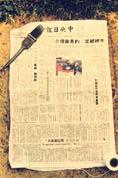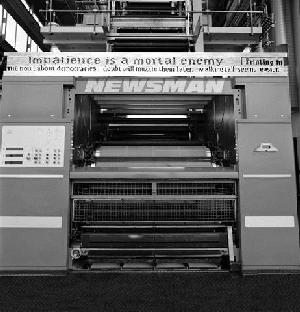|
| |
 |
The Weaver |
 |
What did the weaver say to the journalist?
One of the historical shifts that distances the world of crafts from modernity is the
information revolution. When objects are valued for their immediate communicational value
(the fashion statement) rather than their enduring worth (the heirloom), craft must go by
the wayside. Journalism trades in the latest stories: its prize is the scoop and its
nightmare is yesterday's news. Yet this immediacy obscures the very practical experience
gained over the years by what we call the `seasoned hack' -- knowing not only how to bring
various threads together into a coherent story but also how to fill the columns of a page.
 |
Catherine K takes good quality newspapers, like this Taiwanese daily, and tears the
pages into strips which she then threads on a warp. |
| This is what the paper then looks like. |
 |
 |
Catherine K (Impatience is a mortal enemy, etc.) is a series of three
horizontal and two vertical tapestries that shred the output of print media in order to
reconstruct more timeless messages. Left is Kate Golling's photograph of Catherine K's
tapestry in the Herald Sun newspaper plant. Also try out Barbara Lee's images for alternative reconstructions
of newspaper. |
| Sue Rosenthal (By Lines) stretches tapestry across history as a means of
embracing the beginning and end of journalism. Her triptych begins with the section of the
Bayeux tapestry that tells of the invasion of English soil by the French at Hastings. The
middle section is a pastiche of newspaper headlines and images telling of the reciprocal
invasion of French soil by the allies in 1944. The final section is a domestic living room
with images of headstones on the television screen next to a vase of poppies. Journalism
continues the tradition begun in tapestry: upholstered violence. |
 |
|



